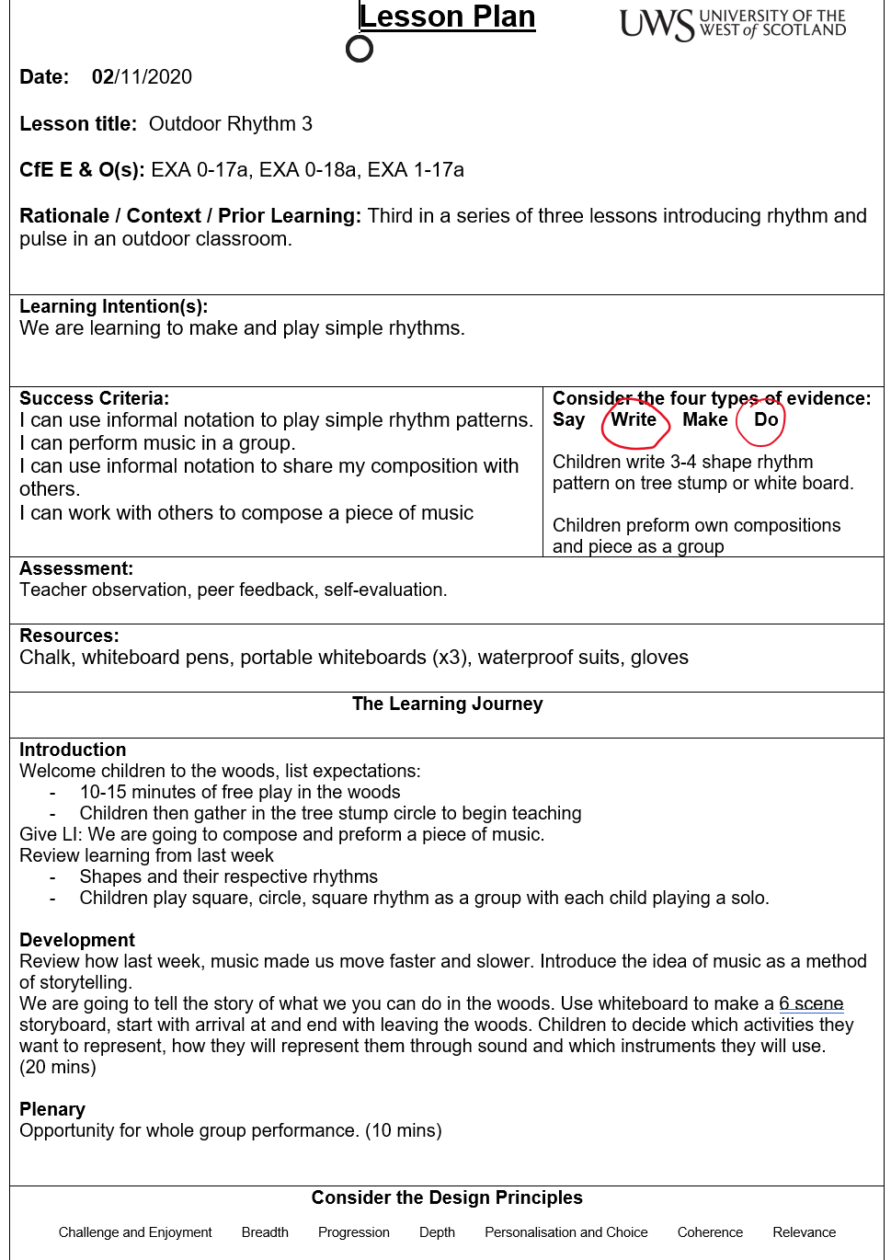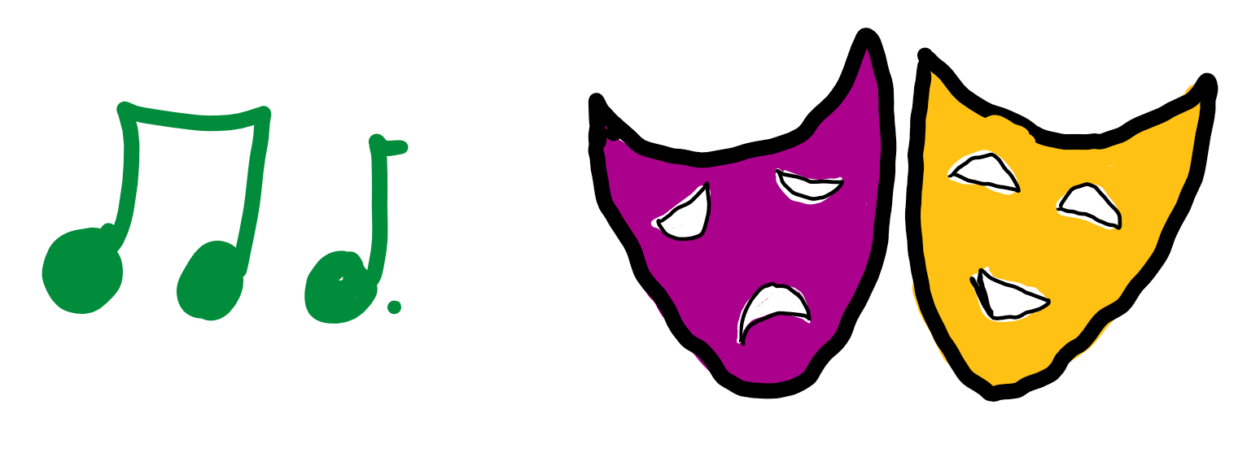This week we looked at using informal notation to teach music . I am lucky enough to currently be working as an outdoor teaching assistant in a primary school. Once a week I spend an afternoon with a Primary 1 class in a (forest school style) outdoor classroom. Following a consultation with the class teacher and guidance from Julie, I planned a series of three lessons creating, playing, and recording simple rhythm patterns.
These lessons used the woods as both a stimulus and as an instrument. This culminated in a final lesson where the children told ‘the story’ of the outdoor classroom. Starting at the entrance and moving through various locations, they used different materials to make rhythms which represented the activities and emotions they experienced in the woods. I was very interested in the way they negotiated what was included in the final performance and what it revealed about their own musicality. I particularly enjoyed the beginning of the piece where they stamped their feet faster and faster until they were jogging on the spot. This was because they wanted to show how excited they were to get into the woods. I had not discussed with them how pacing can be used in music to indicate tone and mood, yet they were able to include these kind of dynamics in their composition.

Through these lessons I gained a deeper understanding of what mattered to each child and what they valued about their outdoor education. Though I had included EXA 1-18a in my lesson plan,
Inspired by a range of stimuli, and working on my own and/or with others, I can express and communicate my ideas, thoughts and feelings through musical activities. EXA 0-18a / EXA 1-18a / EXA 2-18a
(Education Scotland, 2009, p. 67)
I had not considered how I would use the children’s opinions nor their influence on me as a practitioner. This activity provided an experience where the children could explore their creativity and their creation has enriched and informed my own teaching practice.
In Drama we looked at the use of puppets. This was a wonderful opportunity for collaborative learning. We made a short drama with shadow puppets which we had created before the workshop. Here, I gained a deeper understanding of the value of the creative process. Through team work we developed a cohesive narrative which joined our four previously unrelated puppets. To do this, we assigned behaviours based on associations and connotations we had with our puppets.

In the early years, this activity seems to be a natural extension of play and would harness their innate power of imagination. This kind of creativity comes naturally to children but requires teacher facilitation in the classroom (Craft, 2007). This task also required negotiation and adaptation for our individual ideas to work together as a whole. This could provide a venue for children to utilise and develop social skills in a way which is relevant to their lives.

References
Craft, A. (2007) Creativity and possibility in the Early Years. Available at: www.tactyc.org.uk/pdfs/reflection-craft.pdf (Accessed 4 January 2020)
Education Scotland (2009) Curriculum for Excellence: Experiences and Outcomes. Available at: https://education.gov.scot/Documents/All-experiencesoutcomes18.pdf


